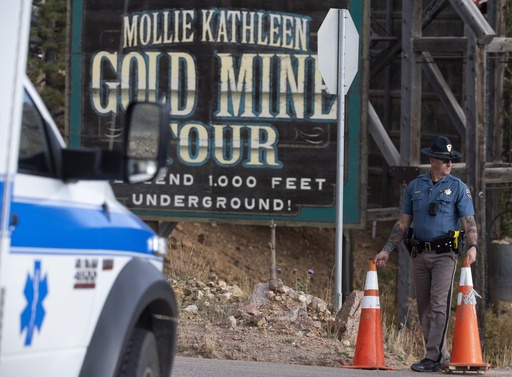
DENVER — An incident at a historical gold mine in Colorado last year resulted in the tragic death of a tour guide named Patrick Weier, who fell from an elevator when it malfunctioned during descent. This preliminary information sheds light on the circumstances surrounding the accident, revealing that the elevator’s door was apparently left unsecured.
As the elevator moved downward, the door swung outward, colliding with the mine shaft’s side. Investigations concluded that Weier was ejected from the elevator, getting caught in the shaft and subsequently landing on top of a tourist below as the elevator continued its descent.
This disturbing event occurred in October at the Mollie Kathleen Mine, situated in the mountain area near Colorado Springs. The details of the incident were included in an investigative report that emerged after a public records request.
Earlier this month, the local sheriff’s office stated that Weier’s death was attributed to “operator error,” although they did not elaborate on how exactly he died or what the specific error entailed. Following the accident, state mining regulators evaluated the mine’s equipment and found no significant issues.
According to Steve Schafrik, an associate professor of mining engineering at the University of Kentucky, modern commercial mining elevators are typically designed to prevent movement unless all safety systems are fully operational. However, he noted that he lacked experience with elevators in conversational settings, such as those at tourist mines.
Surveillance footage captured the moments leading up to the fatal incident, showing Weier trying to join a large group of tourists on a double-decker elevator for a steep 1,000-foot descent into the mine. Reportedly, the elevator was extremely crowded, making it difficult for him to board. Witnesses recounted Weier urging the tourists to squeeze together for him to fit, even though one woman suggested he could ride in the less crowded upper compartment.
It was indicated in the report that Weier struggled to secure the elevator door during the chaotic boarding process. Within moments of the elevator starting to descend, the passengers felt it colliding with the sides of the shaft. Weier exclaimed phrases like “I can’t stop this,” as debris filled the enclosed space, obscuring their vision and creating panic. Several tourists lost their hard hats and were left relying on sound to navigate the confusion in the dim light.
The investigative findings mentioned that about halfway down, the door unexpectedly opened and detached, scraping along the elevator shaft. It is believed that Weier activated the emergency bell to halt the elevator right before he fell out, becoming momentarily stuck between the wall and the moving elevator before he ultimately landed inside the top car.
As the elevator came to a sudden stop, the tourists in the upper compartment realized someone had fallen into their space—Weier himself. His body fell onto a woman, who reported feeling as if she was being suffocated beneath him. Meanwhile, another woman in the lower section found herself trapped by the bent door until help could release her.
In the aftermath, a couple of women from the upper compartment attempted to escape via a ladder. They reported the ladder was unstable but managed to reach safety. The accident left a subsequent group of tourists stranded underground for several hours while rescue operations ensured the elevator was safe for their ascent.
Attempts to contact the mine’s owner for comments went unanswered, and the mine’s website currently indicates that operations are suspended until further notice. Weier, a resident of the nearby town of Victor, Colorado, was a devoted father of a 7-year-old son. Since the incident, several tour participants have contributed to a fundraising effort for his son, highlighting how Weier’s extensive knowledge of mining history had positively impacted their experience.

